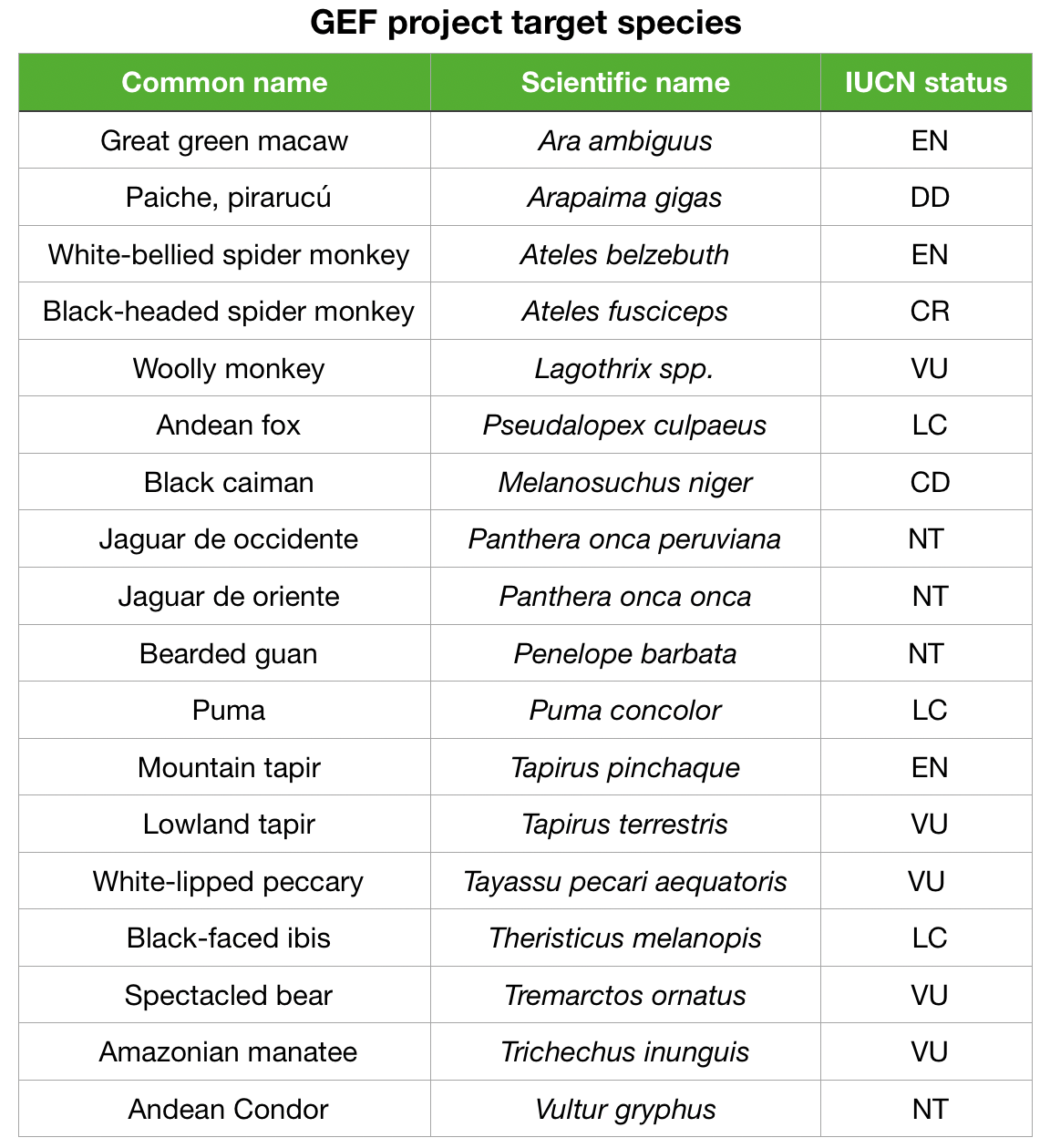Ecuador maintains a protected area system that includes 54 reserves that contain a wide range of globally important wildlife species. However, this system provides only partial protection to wildlife because individual protected areas are too small to protect key wildlife species with large habitat requirements. Additionally, protected areas can be internally fragmented and disconnected across the broader landscape, with negative implications for population viability.
Through the Paisajes - Vida Silvestre project, led by the Ministry of Environment, financed by the Global Environment Facility (GEF); the United Nations Development Program (UNDP), as an implementing agency; and Wildlife Conservation Society Ecuador (WCS), as executing partner, sought to consolidate the landscape approach in Ecuador within the National System of Protected Areas (SNAP in Spanish), thus contributing to the existing investments in this system and the paradigm shift that would increase the effectiveness in reducing pressures on flora and fauna nationwide. Through this project, we advocated a landscape-wide approach that improves habitat and connectivity for wildlife, increases the capacity of indigenous communities to use wildlife in a sustainable manner, reduces conflicts with large carnivores, and enhances coordinated institutional action for reducing illegal hunting and wildlife trade through the implementation of more effective control systems.
This project focused on five landscapes taking into account: the size and levels of connectivity, the presence of threatened species, the levels of threat that human activities produce, the levels of endemism of wild species, the representativeness of the ecosystem, and the diversity of the ecosystem. These are:
- Pambilar-Cotacachi Cayapas
- Cotacachi Cayapas-El Ángel
- Llanganates-Antisana-Cofán Bermejo
- Yasuní-Cuyabeno
- Podocarpus

Additionally, this project worked on the conservation of 18 globally threatened wildlife species (Table Priority species of the Paisajes-Vida Silvestre project), which were selected based on the following criteria:
- Home Range. The ranges of the selected species were categorized on the basis of the home range of individuals, their dispersal distances, and the size of the area to maintain and ecologically functional population. These species require connectivity between patches of optimal habitat in landscapes with protected areas.
- Vulnerability. Species received ratings according to their IUCN threat categories: Critically Endangered (CR), Endangered (EN) or Vulnerable (VU), Near Threatened (NT), Data Deficient (DD), Least Concern (LC), and Not Evaluated (NE).
- Habitat Heterogeneity. Although range size is important, some species also require a variety of different habitats for feeding, reproduction and dispersal. The level of connectivity between habitats is also important.
- Ecological Functionality. Some species have significant effects on the structure and function of ecosystems, and their conservation therefore guarantees the maintenance of healthy ecosystems and communities. For example, large predators such as jaguars control the composition and abundance of prey, primates disperse seeds and ungulates such as peccaries have profound effects on the regeneration of canopy species and the structure of the understory.
- Socioeconomic Importance. Species with socioeconomic importance (whether positive, for example in cultural terms, as food for local people or as attractions for tourism, or negative, through damaging crops, transmitting diseases of competing for limited resources) were prioritized.
